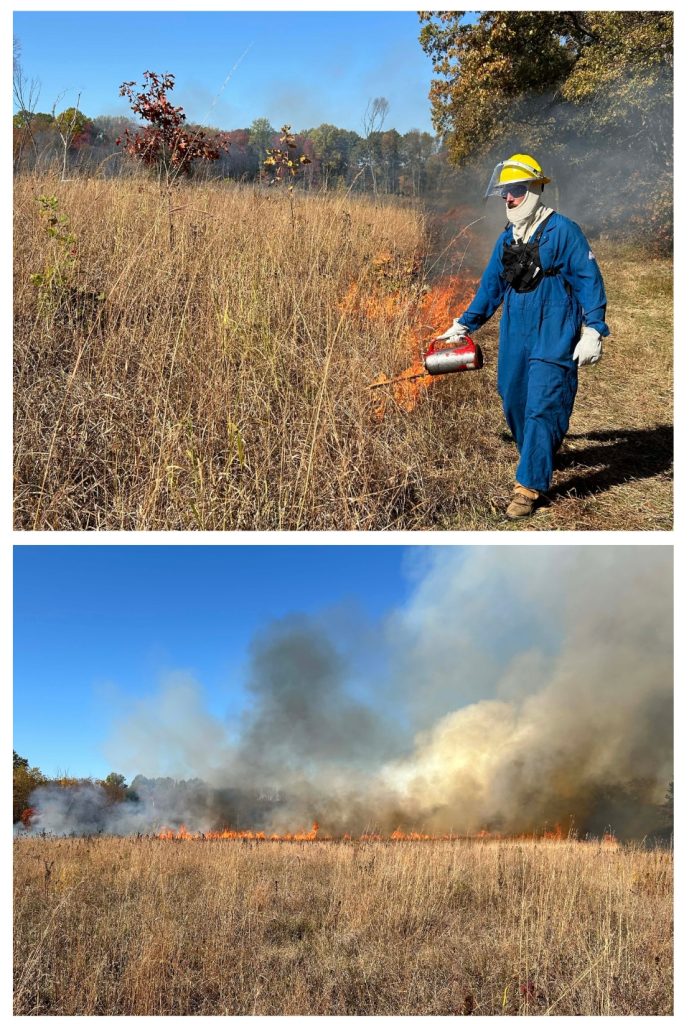By Jarod Reibel

As part of the Edward Lowe Foundation’s conservation mission, we’ve been restoring areas of Big Rock Valley (BRV), our 2,000-acre campus in southwest Michigan, back to native landscapes. This includes savannas and prairies that were prevalent prior to European settlement. These restored habitats rely on periodic fires to remain healthy, which is where our prescribed fire crew comes into the picture.
Many of our staff are trained in wildland firefighting, and we collectively burn 150 to 200 acres each year at BRV. This process begins in the winter months with the development of a burn plan, which identifies areas of the property we would like to burn, along with ‘prescriptions’ needed to ensure safe and effective burns. These prescriptions include the season, wind direction and speed, relative humidity, temperature, cloud cover, ventilation rate, time since last rainfall and fuel moisture levels. Once all of the prerequisites are met, the foundation’s burn crew conducts the prescribed fire.
Most of our prescribed fires take place during the spring when vegetation is dead and dry, making things easier to burn, and favorable weather conditions for burning are more frequent. In recent years, however, we’ve begun to conduct summer and fall burns to better mimic natural fire regimes, as historically fires didn’t only happen in the springtime. Throughout the year, plants are at different lifecycle stages, and fire impacts them differently depending on what stage they are in. If we only burned during the same period, we would unintentionally be favoring a subset of plants, whereas by varying the timing of burns we are able to better balance the impact.
This year was relatively light from an acreage standpoint, as we only burned 83 acres. Yet it was a great year from an impact standpoint. Most of our burns are for maintenance purposes — repressing invasive species and woody succession, removing the built-up thatch layer and reinvigorating prairie species. One of our spring burns, however, (see video below) marked the first for the Suseland Prairie, which is our newest established prairie and, at 30 acres, also the largest contiguous prairie at BRV.
Prairies typically burn quickly, but because this young prairie lacks abundant vegetation, it was difficult to get fire to move across the landscape. Literally hours after the flames went out and the smoke dissipated, turkeys were canvasing the black landscape looking for uncovered seeds and bugs. Still, the burn really did its work. Days later, the black began to show signs of green growth poking through the ashes, signaling that the restart had already begun. Fast forward several months to the middle of the growing season: The Suseland Prairie exploded with vibrant colors from the sea of newly grown forbs. It was buzzing with life from insects and birds, and new vegetation was filling in the previous gaps. It was clear this prairie responded positively to its introduction to fire.
Wrapping up our 2024 burn season, we were able to conduct three more prescribed burns in October, thanks to the weather being extremely mild and dry. These burns were also a great training opportunity to break in several new burn crew members and give them experience before spring rolls back around next year, when we dive into another busy burn season.